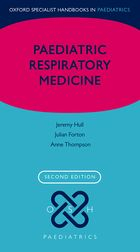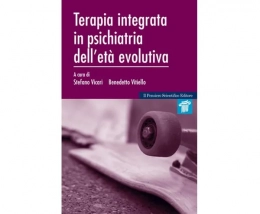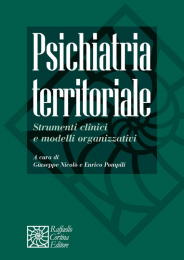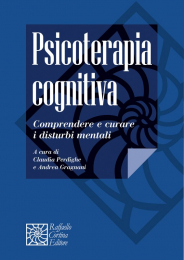Non ci sono recensioni
Description
- Deals with common problems faced by all paediatricians everyday as well as the rare conditions seen by specialists in the field
- Divided neatly into sections that cover the clinical presentation, diagnosis, and management of respiratory problems
- Provides useful content for various exams and training in the field
New to this edition
- Thoroughly updated and revised in line with developments in paediatric respiratory medicine since the first edition
- Provides useful content for various exams and training in the field
Paediatric Respiratory Medicine Second edition remains the first point of reference for those faced with treating acute or chronic respiratory problems. The handbook discusses the approach to clinical problems, specific conditions, supportive care and practical procedures, and includes vital appendices covering specific tests and statistics. Designed as a practical guide, it serves general and specialist paediatricians at both consultant and trainee level.
The book is divided into five parts. Part I provides a practical approach to acute and non-acute clinical problems. Part II provides detailed information about common and more rare clinical conditions. Part III provides useful information on supportive care, including for example, use of non-invasive ventilation and the care of a child with a tracheotomy. Part IV gives details on how to perform several practical procedures, such as ciliary brush biopsy, flexible bronchoscopy, and inserting a chest drain. The appendices provide information on lung function testing and tables of age-corrected normal values for several respiratory parameters.
Written by three consultants in paediatric respiratory medicine, their expertise in the subject provides all levels of paediatricians with practical guide on a subject that is increasingly relevant in paediatrics.
Table of Contents
Part I. Approach to clinical problems
1: Examining the respiratory system
2: Poorly controlled asthma
3: Recurrent or persistent 'chest infection'
4: Chronic cough
5: Stridor
6: Infant apnoea
7: Cystic fibrosis: poor weight gain
8: Cystic fibrosis: loss of lung function
9: Chest pain
10: Haemoptysis
11: The immuno-compromised child
12: Muscle weakness
13: Pneumonia on the intensive care unit
Part II. Specific conditions
14: Asthma
15: Cystic fibrosis
16: Respiratory pathogens
17: Community-acquired pneumonia
18: Bacterial infection
19: Viral infection
20: Fungal infection
21: Parasitic and protozoal infection
22: Tuberculosis
23: Human immunodeficiency virus infection
24: Structural problems of upper and lower airway
25: Sleep disordered breathing and other sleep problems
26: Respiratory control disorders
27: Sudden infant death syndrome
28: Apparent life-threatening events
29: Cerebral palsy
30: Gastro-oesophageal reflux and aspiration lung disease
31: Foreign body aspiration
32: Inhalational lung disease
33: Non-cystic bronchiectasis
34: Primary ciliary dyskinesia
35: Primary immune deficiency
36: Post-infectious bronchiolitis obliterans
37: Pleural effusion
38: Pneumothorax
39: Chronic lung disease of prematurity
40: Chest wall deformity and scoliosis
41: Congenital lung anomalies
42: Craniofacial abnormalities
43: Atopic eczema and allergic rhinitis
44: Food allergy
45: Heart disease
46: Interstitial lung disease
47: Hypersensitivity pneumonitis
48: Neuromuscular weakness
49: Thoracic tumours
50: Pulmonary complications of cancer treatment
51: Pulmonary hypertension
52: Pulmonary infiltrates with eosinophilia
53: Sickle-cell disease
54: Rare diseases affecting lungs or airway
55: Lung transplantation
Part III. Supportive care
56: Use of oxygen
57: Inhalers and nebulizers
58: Airway clearance techniques
59: Immunization
60: Dealing with non-adherence to therapy
61: Non-invasive ventilation
62: Tracheostomy
Part IV. Practical procedures
63: Airway management
64: Bronchoscopy
65: Chest drain
66: Changing a tracheostomy tube
67: Ciliary brush biopsy
68: Lower airway samples
69: Exercise testing
70: Exhaled and nasal nitric oxide measurement
71: Skin prick testing
Appendices
1: Blood gas and acid-base balance
2: Fitness to fly
3: Polysomnography
4: Measuring lung function
5: Lung function - reference values




